The German Transfer Agreements of 1939
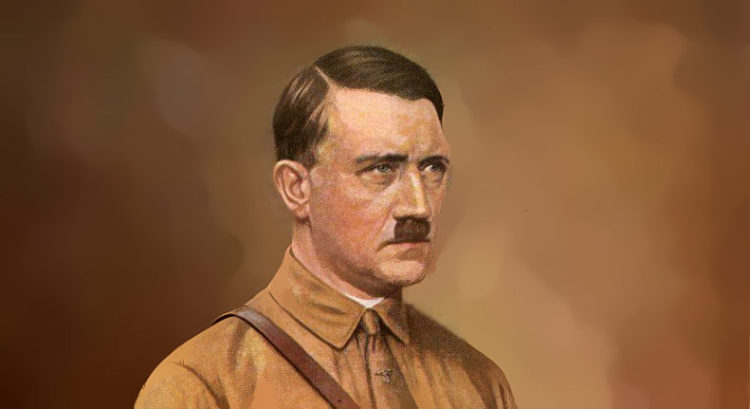
A peaceful approach to the problem of ethnic conflict
by Jay Nichtmann
IN AN ERA when the term “ethnic cleansing” conjures images of the worst kinds of atrocities, it is instructive nonetheless to examine the efforts of the German National Socialist government to seek a peaceful rationalization of national borders and ethnic boundaries to reduce or even eliminate potential sources of conflict between Germany and its neighbors. Despite the propaganda caricature created by the Jews and distributed by the Allies during the Second World War of German policy as one of bloodthirsty conquest and annihilation of other European peoples, it is an undeniable fact that during the 1930s and throughout the war the Germans strove to reach diplomatic understandings with their neighbors regarding the rights of minorities. From many of these understandings stemmed more concrete plans of action to bring national borders into alignment with ethnic boundaries, or vice versa. These rationalizations, where executed, are known as the transfer agreements, and they are a largely forgotten part of the historical record. Nevertheless, they bear witness not merely to the idea of peaceful “ethnic cleansing,” but to its practical accomplishment as well.
To place the transfer agreements in proper historical perspective, it is essential to understand the desire of the National Socialist government to bring those Germans strewn throughout the territories of other states into the territory of the Greater German Reich. This desire was the logical culmination of a movement which had its origins in the French occupation of German lands during the wars of the French revolution and Napoleon Bonaparte. After decades of nationalist struggle against dynastic conservatism and regional particularism, the creation of a genuinely German nation-state had achieved only partial success in 1871. The refusal of the Austrian Habsburg dynasty to relinquish its Hungarian and Slavic territories, in spite of the increasingly obvious portents of ethnic discontent which appeared after the Austrian defeat in 1866, prevented the establishment of a Greater Germany. Furthermore, the ethnic mixing of Germans and Poles in the East complicated the fostering of a sense of German nationalism in West Prussia, Posen, and Silesia. Various attempts undertaken during the era of the Second Empire to Germanize the Poles achieved only a limited success. Of course, the upheavals of the First World War created new complications as lands of the Russian Empire came under German control and slumbering national sentiments were awakened anew, as was attested in a signal fashion by the emergence of a Polish state. But it was the catalyst of the Bolshevik Revolution which set the ethnic stew of eastern Europe boiling, and provided the motivating experience behind the National Socialist policy.
The two most remarkable aspects of the transfer agreements are the rapidity with which they were negotiated and the timing of the negotiations. It is remarkable that agreements dealing with such a difficult issue, the large-scale removal of an ethnic group from one nation to another, could be negotiated in only a few weeks or even a few days. This fact demonstrates the professional ability of German diplomats in securing meaningful and permanent solutions to difficult problems.
Likewise, the timing of the treaties is no less astonishing, especially when viewed from the perspective of historical hindsight. What would become known as the Second World War had just begun, and, according to the conventional, propagandized historical version of the war, the National Socialists were embarking on world conquest. Yet, with the transfer agreements, one can discern quite clearly a force running contrarily to the official account: Germandom was consolidating itself, rationalizing its ethnic frontiers, undoing the most irrational results of the Drang nach Osten of the Middle Ages. It is hardly an exaggeration to say that the overall effect of the transfer agreements is such that a truly objective historical observer must question the factual basis of the official account of National Socialist Germany as an aggressor nation which deliberately ignited the worst disaster ever to have befallen the European peoples. This premise is the basis of the historical inquiry at hand.
The basic nature of the problems facing the National Socialists was acknowledged on November 26th, 1937, by the Minister of the Interior, Dr. Wilhelm Frick, in a speech to 25,000 Upper Silesians in the city of Gleiwitz, where he expounded the principle of the unification of all ethnic Germans within the borders of the Reich. “We are aware of the difficulties which stand in the way of its realization, because the ethnic boundaries as they exist today came into being centuries ago. There are splinters of ethnicity, and there are jumbled situations where it is difficult to make out the boundary.” And while the German government had sought since 1933 to revise through traditional avenues of diplomacy the notoriously unjust Versailles settlement and its ethnic simplifications, the successful conclusion of the Polish Campaign opened new possibilities for the carrying out of the plan to bring home ethnic Germans from the East. On October 8th, 1939, two days after Adolf Hitler’s keynote Reichstag speech, the Reichsführer-SS Heinrich Himmler received the task of consolidating Germandom through the auspices of the newly established SS Rasse-und-Siedlungs-Hauptamt (SS Race and Settlement Main Office). Around the same time, the German Foreign Ministry initiated negotiations with three states to arrange the transfer of ethnic German minorities in Eastern Europe to the German Reich, specifically, Estonia, Latvia, and the Soviet Union.
The specific conceptual origin of the German transfer agreements lies in the agreement between Greece and Turkey signed on January 30th, 1923, which compelled the repatriation of Muslims living in Greece to Turkey and Anatolian Greeks to Greece. The Turkish nationalists under Mustafa Kemal, having just recently broken Greek military power in Anatolia, were able to take advantage of the Italian and French withdrawal from the region to secure a more or less permanent settlement to the Greco-Turkish conflict, as it existed at the time. By removing the Anatolian Greeks and reclaiming Muslims living in Greece, the Turkish nationalists eliminated a considerable source of friction between the two nations. Tellingly, it has been in the areas of mixed settlement not controlled by Greece and Turkey at the time, and thus unaffected by the transfer agreement, most notably Cyprus, that more recent conflicts between the two countries have arisen. Quite obviously, the 1923 arrangement is a shining example of nationalistic pacification of tensions through a rational stabilization of ethnic and political boundaries, quite disparate from the accepted view of the influence of nationalism as an antagonizing, rather than conciliating, force. In any case, the success in eliminating ethnic tensions in the Aegean achieved by the Greco-Turkish agreement inspired the German National Socialists to strive for similar arrangements in their ethnic sphere.
The specific issue which caused the German government to negotiate in October and November 1939 its lightning-fast treaties with Estonia, Latvia, and the Soviet Union was the effort of the British to destabilize eastern Europe. Appealing to various nations in the region, the British presented a picture of German intentions, which portrayed an insatiable appetite for territorial aggrandizement, especially where the presence of German minorities could allegedly be exploited as a pretext for aggressive action. The Baltic Republics accepted the British version of German intentions wholeheartedly and concluded treaties of alliance with London. The German response was to offer immediately to remove the alleged source of German grievance against those countries still affected. (As mentioned above, Lithuania had already settled its territorial and ethnic issues with Germany earlier in 1939.) The offer was accepted by all to whom it was extended.
It was unfortunate for the Baltic Republics that they succumbed to British pressure, because it placed them beyond the ability of Germany to intervene with the Soviets on their behalf after Stalin ordered their occupation. As Adolf Hitler pointed out in his speech to the Reichstag on December 11th, 1941, a treaty with the British was useless for the Baltic States, first and foremost, because the British, according to Hitler, never gave anyone anything in an alliance, rather only demanded, and because the geographical situation of London vis-a-vis the Baltic ruled out timely and effective assistance in any case. Understanding the nature of the Judeo-Bolshevik threat, which would soon engulf the Baltic states, the National Socialists moved to protect ethnic Germans residing in the areas of Poland which were occupied by the Red Army. Using the recently concluded treaty of alliance negotiated by Ribbentropp and Molotov, the Germans were able to persuade the Soviets to agree to an exchange of populations, which would allow the ethnic Germans in eastern Poland to escape the imminent Jewish purges. By making the transfers voluntary in nature, the Germans were able to avoid having to compel Slavic groups in Western Poland to move to the Soviet zone. It is unknown how many actually availed themselves of the option, but it is certain that few accepted Stalin’s invitation. Also, it should be noted that Polish Jews in the German Zone were likewise accorded the option of emigrating to the Soviet Zone. Given the distorted image presented by Hollywood Jews in numerous motion pictures, this little-known fact takes on an importance far beyond what it ought to have had.
The German-Estonian Transfer Agreement
The decision on the part of the Estonian Germans, the descendants of colonists who had arrived in the wake of the conquests of the Teutonic Knights, to leave a land which had been their home for some 700 years was not an easy one. On the one hand, these proud people had maintained their ethnic, cultural, and spiritual existence in the face of heavy odds from the surrounding population and from the pressures of the Russian tsars, who had frequently attempted to force them to accept Russian culture and the Russian language. On the other hand, the nature of their settlement, being dependent on sea communications with Germany for any influx of new settlers, caused the knights who pioneered the settlements to establish themselves as the landed lords in the country, dependent upon the Estonians for providing the members of the farm laboring class.
The tenacity of the Germans’ struggle for existence had bonded them to the land. Generation after generation had sworn to their fathers, “This land stays German!” in a chain of rootedness stretching back into the mists of time. Having weathered many terrible events in their long history, the Estonian Germans would have to face a truly horrifying fate to compel them to leave the land which they had worked so hard to transform into the likeness of the Germany they had left behind in the Middle Ages.
Only twenty years before they had to make the fateful decision to remain or to return to the Reich, they had been presented with a bitter harbinger of the future during the bloody fighting of the Russian Civil War. The ravages of the Red Army and the depredations of the Jewish Cheka had scarred the Estonian Germans and left them impoverished. The proximity of Estonia to Petrograd had ensured that the Bolsheviks would not abandon the area without a fight, and it was only thanks to the intervention of the Iron Division under Rüdiger Graf von der Goltz, the liberator of Finland, and other German troops that the White Russian and Baltic forces were able to drive the Red Army from the region. From 1921 through the 1930s the Estonian Germans were able to breathe somewhat more easily as the Soviet Union consumed its own energy in domestic affairs, giving the Baltic region a period in which it was able to assert itself in the face of its massive neighbor to the east. Nevertheless, the Estonians, struggling to define themselves as a nationality, began to put pressure on the Germans, who were incorporated as a “minority” into the new parliamentary system. The ethnic Germans saw their traditional political and cultural autonomy under attack. But it was the outbreak of war in 1939 which forced the Estonian Germans to make the decisive choice between homeland and Fatherland, as the Red specter was raised anew and the German government was forced to cede Estonia and Latvia to the Soviet Union’s sphere of influence, and as all three of the Baltic states rashly concluded treaties of alliance with Great Britain. Knowing that the political and military situation of Estonia and Latvia was now hopeless, all the German government could do was to save the ethnic Germans — before it was too late and the Jewish Chekists once again wrought unspeakable atrocities in the wake of an invasion by the Red Army.
The German negotiator in Reval was the ambassador, Dr. Hans Frohwein, who was granted full plenipotentiary powers by the Reich government for the purpose of concluding a transfer agreement as swiftly as the circumstances would permit. Having been in Reval as the German ambassador for almost three and a half years already as of October 1939, Frohwein was a known personality with the Estonian government. This familiarity permitted Frohwein to make astonishingly rapid progress in his negotiations, even considering that the Estonian Germans were more rural in their socioeconomic make-up than their urbanized cousins in Latvia, who had a more complicated task in liquidating assets. Furthermore, Frohwein was animated by the same concern for his kinsmen which motivated his colleagues in Berlin, and he knew that the tensions exerted on the Baltic republics by Britain and the Soviet Union would soon make the Estonian Germans’ position completely untenable.
The Estonian negotiator was Johannes Markus, who had been granted plenipotentiary powers by the republic’s president, Konstantin Pats. Markus, who later was the president of the World Association of Estonians after the Bolsheviks had occupied the country and driven the government into exile, was likewise eager to conclude negotiations, because like so many in the Baltic governments, he believed that the presence of the ethnic Germans gave the Reich government an excuse to declare war on Estonia. Therefore, he wished them to leave as soon as possible. The real tragedy in this attitude, though, is that by rushing to bid the Estonian Germans bon voyage at the earliest opportunity, Markus and Pats effectively eliminated their strongest guarantee against Bolshevik encroachments, because Stalin would never have antagonized his nominal German allies during the critical first year of the Soviet secret mobilization against Europe. It was this short-sightedness to which Adolf Hitler spoke in his speech to the Reichstag on December 11, 1941. In any case, the transfer agreement was signed on October 15, 1939, not even a week and a half after Hitler had first unveiled his plans for the ethnic consolidation of Germandom.
Organizational work for the implementation of the transfer began while the negotiations were still in progress. A myriad of details had to be worked out, and it is a tribute to German efficiency that the bureaucracy which was to handle the “out-processing” of the Estonian Germans was put in place as quickly as it was. Among a host of lesser details, the Estonian Germans first and foremost had to establish in conjunction with the Estonian authorities processing stations to complete required paperwork, implement a trust administration for the regulation of the transfer of property and wealth, coordinate the use of the port facilities at Reval, and stockpile materials for packing and crating the property leaving Estonia.
From a grand administrative standpoint, the Deutsche Umsiedlungs-Treuhand-Gesellschaft m.b.H. (German Trust Administration Corporation) was the most important element of the arrangements established by the Estonian and Latvian governments on the one hand and the German ethnic groups in Estonia and Latvia, with the guidance and assistance of the Reich government, on the other. Administered by State Secretary Wilhelm Keppler, who had already gained considerable practical economic experience as the right-hand man of Hermann Göring in the administration of the Four-Year Plan, the trust was designed above all else to ensure that the removal of property and wealth from the Baltic states did not economically destabilize the Baltic economies.
For example, one of the most remarkable facets of the German-Estonian transfer agreement is the restriction placed on returning Baltic Germans regarding the amount of wealth which could be brought out of Estonia to the Reich. A limitation of Ekr. 50 in pocket cash applied to every individual; all other cash and all stock, bonds, and other interest-bearing papers had to be deposited in a special account at the German Embassy established for the use of the Trust Administration. Furthermore, the Estonian currency which Estonian Germans later deposited in the Reichsbank was to be returned to the Estonian central bank, the Eesti Bank. Stocks, bonds, and other securities had to be deposited in a strong room at the German Embassy for the purpose of establishing their worth. Furthermore, a cap of Ekr. 500 per person aged 15 or older was placed on the removal of jewelry made of precious metal and gemstones; children under 15 could bring none. Moreover, the removal of motorized vehicles was made contingent upon the approval of the Estonian Minister of Economics, although the owners had to be compensated if they did not receive permission to remove their vehicles. Thus, in Articles 2 and 3 of the Protocol the observant reader can clearly discern the experiences of both nations as victims of Jewish expropriations and currency manipulation in the years after the First World War. As a result of the economic misery they had suffered, the two nations had agreed that the transfer would not be allowed to become a means by which an enormous and economically destabilizing transfer of wealth to Germany (or to put it more bluntly, a looting of the country) could take place. This says much about German sensitivities in the area of “ethnic cleansing.”
The out-processing proceeded rapidly per the provisions of Article 1 of the transfer agreement, with identifications being checked against the membership list of the Kulturselbstverwaltung der deutschen völkischen Minderheit (German Ethnic Minority Cultural Autonomy Administration), an organization established in 1925 under an Estonian law designed to recognize and protect the interests of ethnic minorities. A German not so registered could also establish his eligibility by applying for recognition with the Estonian Ministry of the Interior. An applicant for resettlement who had demonstrated his eligibility as a member of the German ethnic minority was then formally absolved of his Estonian military obligation and was issued a ship’s pass to leave the country. After packing personal belongings and passing an inspection to ensure that the currency limitation was being observed, the resettler and his family, having been similarly vetted, could depart.
The out-processing and embarkation of the German resettlers commenced on October 16th, 1939, as soon as the Estonian president had ratified the treaty and had communicated this fact to Dr. Frohwein in Reval. The first group of 460 Estonian Germans departed Reval on October 18th aboard the steamer Utlandshörn and arrived in Danzig-Neufahrwasser on October 20th. Further transports took place in rapid succession, and had essentially reached an end only a month later, and the last transport from Reval arrived in Gotenhafen on December 18th, bringing the total number of Estonian Germans transferred to approximately 13,000. Three days later, the Estonian government revoked the charter of the German Ethnic Minority Cultural Autonomy Administration with an effective date of 1 January, 1940. With this action, the German ethnic group in Estonia ceased to exist.
As early as December 1939 the ethnic Germans arriving from Estonia, being predominantly landowners, began moving into the Warthegau and Danzig-West Prussia for the purpose of strengthening the demographic situation in the eastern provinces and restoring them to their former status as the “breadbasket of Germany.” The influx of settlers experienced in managing estates was a highly desirable occurrence from the standpoint of the Reich government. As State Secretary Werner Willikens of the Reich Ministry of Nutrition explained in an essay entitled, “Das neue Land im Osten,” and which was published in the Völkischer Beobachter on December 14th, 1939, “a new homeland and a new existence simply must be given in this region to the farming families among the ethnic Germans returning at the call of the Führer” as an integral part of the renewal of agriculture in the Warthegau along National Socialist principles. The story of the Estonian Germans in their new homes must be told in another place, but the tragedy which overtook them in 1945 and 1946 cannot tarnish their accomplishments and dedication to their new homes and farmsteads.
The German-Latvian Agreement
The German ethnic group in Latvia had a history and existence comparable to that of their neighbors in Estonia, although the majority of the Latvian Germans were town dwellers instead of farmers. Likewise, the Bolshevik occupation of Latvia during the Russian Civil War had had a pronounced impact on the Latvian Germans’ economic and social welfare. Furthermore, the fact that Latvia, as was also the case for Estonia, fell within the Soviet sphere of influence which emerged as a result of the Ribbentropp-Molotov agreement meant that it was only a matter of time before the Jewish commissars and Chekists once again perpetrated their bloody work on the Latvians.
The social and economic situation of the Latvian Germans was rather different than their cousins in Estonia. First and foremost, the German ethnic group in Latvia was comprised overwhelmingly of town and city dwellers, most of whom lived in Riga. The organization of the German ethnic group accordingly was characterized by the threat of social atomization as the traditional social structure based on guilds and trade associations broke down under the impact of Tsarist russification attempts, the 1905 Revolution, the World War, Bolshevik expropriations and murders, and the demands of the Latvians for assimilation into the republican mold established after the Bolsheviks had been driven out.
As in Estonia, the bitter pill of alienation was sugar-coated by the Latvian government in the form of a law designed to recognize and protect the Germans’ ethnic status as an officially recognized minority. The organization arising from this legal status was the Verein Deutsche Volksgemeinschaft in Lettland (German Ethnic Community in Latvia) and it was supplemented by a few remnants of the old order, mainly church associations, and a cultural institute founded in Riga in 1921 called the Herder-Institut. As in Estonia, these measures were stop-gaps at best, and actually were even less effective in urban Riga than in rural Estonia, because in Riga there was the added social danger of city life and all its attendant evils. As a result, the German ethnic community in Latvia, while still possessing a considerable amount of property, industrial enterprises, and commercial investments, was faced with the danger of being absorbed into the Latvian population and assimilated.
During the 1920s and 1930s, it ought to be pointed out, this process most directly threatened agricultural workers, small artisans, and what existed in the way of an industrial proletariat. Yet, the other classes maintained themselves only by isolating themselves from each other and from the surrounding Baltic population. Therefore, the resettlement to the Reich undoubtedly saved these ethnic Germans from a fate of assimilation and cultural destruction, and contemporary observers in Germany itself noted that this salvation was the reason so many ethnic Germans took advantage of the transfer agreements.
Another facet in which the Latvian resettlement differed from the Estonian lay in the fact that in Riga there resided a community of German nationals who had citizenship in the Reich. Therefore, while the negotiations over the disposition of Latvian German property and citizenship procedures, which were rather more complicated than the negotiations in Estonia, proceeded apace, the German government could take immediate action by evacuating the German nationals. The first transport took place on October 15, over two weeks before the transfer agreement with the Latvian government was signed.
The negotiators of the transfer agreement were, on the German side, Ulrich von Kotze, the special envoy and minister plenipotentiary of the German government in Riga, and, on the Latvian side, by Hermanis Apsits, the Latvian Minister of Justice. Kotze, unlike Dr. Frohwein in Reval, had been on station for less than a year, and this may have contributed to the slowness with which the agreement was negotiated. However, he was also assisted by the leader of the German ethnic group in Latvia, SS-Standartenführer Dr. Erhard Kroeger, who was in a good position to advise the negotiators regarding the details of the bureaucratic arrangements.
The specific details of the liquidation of property and the termination of the requirements of Latvian citizenship did not differ appreciably except in scale from the Estonian arrangements. However, the complexity of German economic disengagement from Latvia required the establishment of the German Trust Administration Corporation mentioned previously. With this step, the German Reichsbank was brought into the administration of the trust, permitting a smooth transfer of assets and the unencumbered return of Latvian money from Germany to Riga. To ensure that the immediate withdrawal of money was not excessive and thus a threat to the Latvian economy, a cap of 50 Lat in cash was placed on each resettler leaving Riga, and limitations were likewise placed on the withdrawal of jewelry and precious metals. Stocks, bonds, and other interest-bearing papers could not be removed from the country, and there was a general prohibition against removing industrial capital goods and vehicles, although there were exceptions. The care of all of this property was assumed by the Latvian government.
With the concerns of the Latvian government assuaged, the out-processing of the Latvian Germans could proceed. Unlike the provisions of the Estonian agreement, which determined eligibility for resettlement on the basis of membership in the official ethnic minority organization, Latvian Germans had to satisfy the German embassy of their eligibility. Once this recognition had been granted, a resettler could then settle his accounts with the Latvian government and depart.
On October 30th, 1939, Dr. Erhard Kroeger issued the following appeal, which was published in the Rigasche Rundschau:
German racial comrades!
The treaty between the government of Latvia and the German Reich government regarding the resettlement of the German ethnic group in Latvia is signed. The time of preparation and waiting is thus over. We now embark upon the completion of the task given us by History: the recalling of the last German racial comrade to the great fatherland of all Germans.
We do not take leave of this soil with light hearts. But we do not look back, rather ahead. We are under the command of our nation.
Whoever separates himself in these days from his ethnic group in order to remain in this land divorces himself for all time from the German nation. He must know that, because his decision applies to his children and their children. And it cannot be undone.
The transport to the Greater German Reich will begin in a few days. Until then everyone is to remain in place, to make himself ready and to await the order for transport in absolute discipline. The order will reach him via the newspaper and through his neighborhood leaders.
Racial comrades!
We all are experiencing the greatness of this hour.
It is an hour of action and not of words. The Führer has called us. We follow.
The first arrival of ethnic Germans from Latvia occurred, as mentioned previously, on the evening of October 15th, 1939, as 350 German nationals debarked from the steamer Schärhorn in Gotenhafen in the presence of formations of the NSDAP., which were on hand to greet them and to escort them into temporary quarters. Over the next two months, with German transports making 73 port calls in Riga, approximately 50,000 ethnic Germans departed Latvia, the transports ending with the departure of the KdF liner Sierra Cordoba from Riga on December 15th and its arrival in Gotenhafen on the 17th. Just before its departure, an incendiary device, apparently planted by the British secret service, was discovered by the crew. Such were the lengths to which the enemies of Germany were determined to carry their hostility.
The German-Soviet Transfer Agreement
On December 6th, 1939 the head of the Western Section of the Soviet Foreign Commissariat, Maxim Litvinov, arrived in Krakow for a discussion with the German authorities in the Government-General regarding the implementation of a secret protocol concluded between the Soviet Union and Germany on November 3rd, 1939. His arrival was the signal for the official announcement of the treaty to the populations of both occupied zones in Poland, and accordingly the Governor-General, Dr. Hans Frank, issued the same day the following proclamation in the Warschauer Zeitung:
The Reich Government and the Government of the Union of Soviet Socialist Republics have concluded in the spirit of friendship a treaty which gives to the ethnic Germans who live in the Soviet zone of the former Polish state the possibility of immigrating to Germany, and reciprocally secures for the Ukrainians, White Russians, Russians and Ruthenians on this side of the German demarcation line the right to reunite themselves with their tribesmen [Stammesgenossen] in the Soviet Union. This treaty is in accordance with the grand idea of our Führer to give the Germans, who previously lived scattered throughout the world, once again a common homeland, and is also in accordance with the desire of the leader [Lenker] of the Soviet Union to pave the way for the Slavic minorities previously subjugated by Poland to be able to be reunited with their blood relatives. These intentions are now to be realized. All of my authorities and service positions are instructed to ease the activity of the Soviet resettlement plenipotentiaries in every way and to guarantee the necessary assistance to those who declare their adherence to one of the above-named Slavic ethnic groups and who desire to immigrate to the Soviet Union. I harbor the firm hope that the action undertaken by the powers concerned will contribute to the elimination once and for all of a trouble spot created by Polish oppression, will create clear and healthy relations, and will bring eastern Europe into a happy future.
The fate of the Volga and Crimea Germans at the hands of the Bolsheviks during the 1930s had caused the National Socialists considerable anguish. The horrific effect of collectivization on these ethnic German communities was known to the National Socialists, who were powerless to intervene or even to intercede on the behalf of their kinsmen. The movement of the Bolsheviks into Poland as a result of the Molotov-Ribbentropp treaty brought still more ethnic Germans under the power of Bolshevism. This time, however, the Germans were in a position to intercede for the purpose of rescuing ethnic Germans from the fate awaiting the Poles and Baltic peoples. For their part, the Bolsheviks were willing to agree to the transfer of the Germans in exchange for non-Polish Slavs living in the German occupied zone, if for no other reason than that they desired a complacent Germany while their secret mobilization in preparation for a surprise invasion of Europe, projected for 1941, unfolded.
Accordingly, the transfer agreement facilitating this population exchange was arranged on November 3rd, 1939, by SS-Standartenführer Horst Hoffmeyer and Maxim Litvinov. The details of the agreement were considered to be top secret, because it was negotiated concurrently with other issues between the two states. Accordingly, only an official announcement of its existence was published in the Völkischer Beobachter on November 4th. Unlike the transfer agreements with Latvia and Estonia, however, the population exchange in Poland did not take place with lightning speed. Instead, both sides were very careful in setting up arrangements for the visitations of envoys from the other side in order to prevent unintended spying from taking place.

The Germans, being very weak militarily after the transfer of most of the army’s manpower to the Western Front, obviously did not want to permit the Soviets to draw conclusions about what might be possible in the way of a surprise invasion. And the Soviets, planning such an effort, did not want the Germans to observe their deployments and draw conclusions. In addition to all of this, communications were so poor in Poland in that era that news of the transfer agreement had to be disseminated by word of mouth in each town with a German population and in every German village. Therefore, a delay of over six weeks occurred before the transfers, which were almost exclusively German, actually began.
The transport of ethnic Germans from the Soviet zone into German-controlled territory began on the winter solstice of 1939 with the evacuation of those incapable of marching on 93 special trains. Simultaneously, those fit for marching moved out in 11 truck columns and 71 enormous wagon trains, comprising in all some 15,000 vehicles and 25,000 horses. Despite the bitter cold of winter, the German officials, working closely with Soviet authorities, saw to the resettlers’ welfare and ensured that all difficulties were overcome. Large wagon trains continued to come for over a month, and Reichsführer-SS Heinrich Himmler, as the Reichskommissar for the Consolidation of the German Nation, was present in Deutsch-Przemysl on January 26th, 1940, to greet the resettlers in the name of the Führer. A week later, the last-formed transport crossed the demarcation line, and afterwards only stragglers continued to cross until the termination of the resettlement operation on March 1st.
In total, some 129,000 ethnic Germans were resettled in the Reich as a result of the German-Soviet transfer agreement of November 3rd, 1939. Of this number, 55,000 arrived from 726 localities in Galicia, 66,000 from 773 localities in Wolhynia, and 8,000 from 224 localities in the Narev region. The resettlers, after crossing the demarcation line, were moved into the Warthegau and housed in 47 reception camps established for the purpose. There they were re-united with their goods and farm animals and transported either immediately to their new homes (if in the Warthegau or East Prussia) or to other reception camps in the interior of the Reich, whence they moved into their new homes nearby.
Conclusion
Reichsleiter Alfred Rosenberg, himself a Baltic German with his own experiences of the difficulties facing his countrymen, described the return to the Reich of the Baltic Germans in an article published in the Völkischer Beobachter on October 19th, 1939:
In all of them grief and sorrow reigned as they left the last soil of their fathers, turned over their houses to others, as the towers of Reval and Riga sank beyond the horizon. And yet: A great inner pressure has been taken from them. It has been their destiny to live under the domination of foreign rule. In order to retain their homeland, they had, without the protection of the Reich, to be citizens of a state alien to them. They have had the almost insuperable task of maintaining the leading role in their birthright in the midst of a mighty domination by the tsars and on top of that exercising a strong cohesive force in the face of the other peoples of their region. When they look back on it, they may say with pride that they do not come with empty hands…. The Balts are losing a homeland, but gaining their Fatherland.
When one considers the fate of the Baltic republics at the hands of Bolshevik Jews in the service of the NKVD less than one year after the transfer agreements took effect, it is difficult not to admire the vision and wisdom of Adolf Hitler in saving these Germans from the ethnic massacres and deportations which were the fate of the Crimea and Volga Germans, to name just two groups which suffered at the hands of the Jews. In saving the Baltic Germans, the National Socialist government was able to postpone the inevitable war to the death against Bolshevism so that the time gained could be put to good use in eliminating the burdens of the Western Front.
Insofar as Bolshevism was concerned, the National Socialists noted with growing concern the incessant expansion of the Soviet Union along its western frontiers and the increasingly ominous build-up of military forces. As the Soviets annexed new provinces, the Germans, in accordance with the National Socialist principle of unifying Germandom within the borders of the Reich to eliminate the potential for conflict, concluded three additional transfer agreements with the Soviets. The first of these was signed on September 5th, 1940, and was concerned with ethnic Germans in Bessarabia and northern Bukovina. The second and third agreements, negotiated by the German ambassador, Friedrich Werner Graf von der Schulenburg, as part of a more comprehensive treaty dealing with the German-Soviet border and trade relations, were both concluded on January 10th, 1941, and provided for the resettlement of the ethnic Germans in Lithuania and the residual German populations in Latvia and Estonia which had not been evacuated in 1939. Unlike the transfer which took place in the winter of 1939/40 in a general atmosphere of coöperation and friendliness, though, the three follow-up transfers occurred under far more ominous circumstances, with the German resettlers being told by the Soviet authorities that they were undertaking a useless endeavor and that the Soviet Union would catch up with them very soon. The German government, understanding the likelihood of further Soviet expansion, therefore concluded a transfer agreement with Rumania on October 22nd, 1940, providing for the resettlement of ethnic Germans living in southern Bukovina and Dobrudscha.
These ethnic Germans from eastern Europe brought to the Reich in the follow-up agreements were settled heavily in the four eastern provinces of the Reich, just as their predecessors in 1939 for the most part had been and for the same reasons.
In the final analysis, the German transfer agreements stand as mute testimony to the desire of the National Socialists to achieve ethnic stability and harmony in as equitable a manner as possible. The voluntary movements of tens of thousands of people into and out of the Reich were the result of a farsighted diplomacy designed to prevent further conflicts. It is unfortunate that they could not have been more wide-ranging in their scope and impact, but it is unlikely that they would have been sufficient to have prevented the vicious ethnic cleansing of 1945 to 1947 which caused the deaths of millions of Germans, including, it must be pointed out, the Baltic, Wolhynian, Narev and Galician Germans who had resettled in the Warthegau and Danzig-West Prussia along the Warta and Vistula Rivers.
The ultimate irony, of course, is that the nation which had sought to resolve these problems peacefully and without coercion was branded as an “enemy of humanity” by the powers which carried out a murderous rationalization of ethnic and political boundaries far beyond any justifiable claim, pushing the Polish-German border to the Oder. This Jewish spirit of spiteful hatred continues in the policies of the New World Order today.
* * *
Source: National Vanguard magazine, September-October 2002


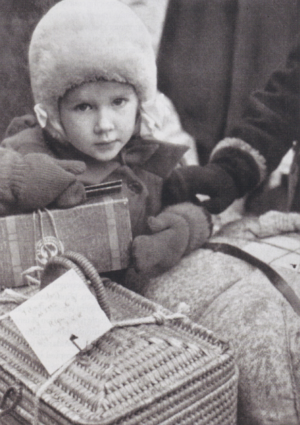
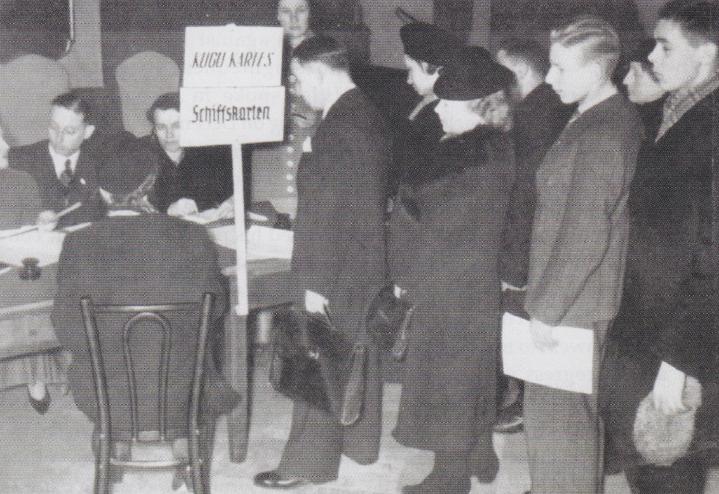
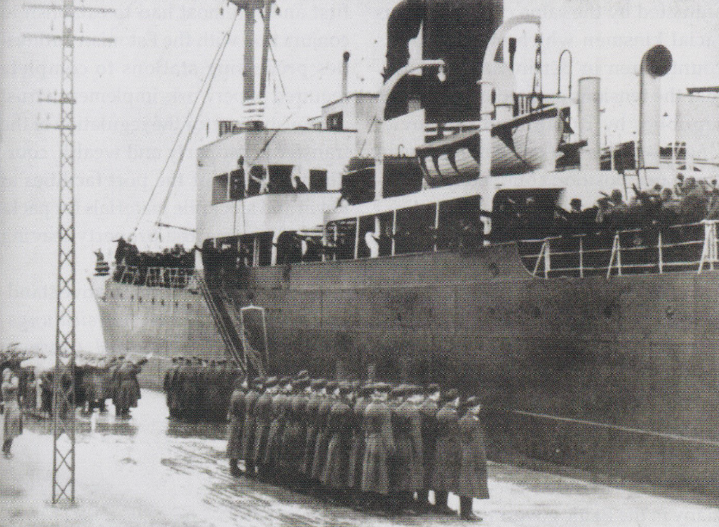
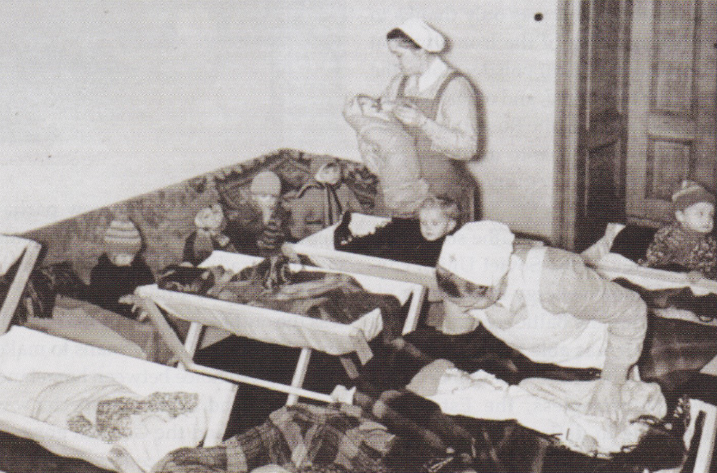
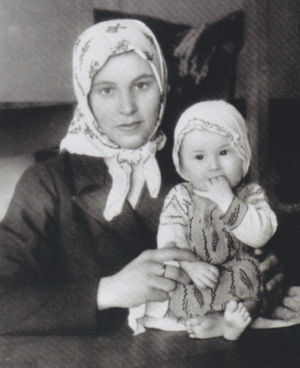
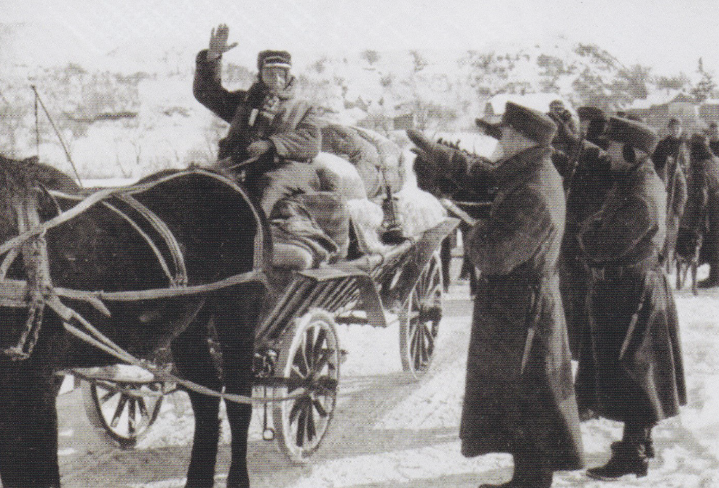




“The internet is the new Volksempfänger”. If that were the case, the operators and censors of the Internet would have to be the heirs of Goebbels. https://spectrum.ieee.org/tech-history/dawn-of-electronics/inside-the-third-reichs-radio Degenerated Tommies indulge in their psychotic projections of an aledged demonic “super Aryanism”, which is supposed to have had the “back-breeding of the animal world” in mind. https://www.kpbs.org/news/2021/mar/29/hitlers-jurassic-monsters/ https://www.youtube.com/watch?v=DCMU1a374lo https://www.youtube.com/watch?v=RSGiwXl8jzE Not a word about the fact that Hitler was a hunting op- ponent & vegetarian, not a word about their own inglo- rious colonial past including the origins of the “safari”. https://www.google.com/search?q=hunting+british+colonialism&source=lnms&tbm=isch&sa=X&ved=2ahUKEwjgj9WW8t_vAhVmhP0HHZgPDdAQ_AUoAXoECAEQAw&biw=1920&bih=966 When it comes to throwing dirt at Germany, they are the undisputed “world champions”, even ahe- ad of the Polacks, the Russians & Jewmuricans. Of course, the Allies never committed any crimes of any kind, downplayed this disreputable system propagandist disguised… Read more »
“Gemmeker ordered Breslauer to document everyday life in the Westerbork transit camp.” https://en.wikipedia.org/wiki/Rudolf_Breslauer What logical use would it be for the “nazis” (sup- posedly so secretive about the “final solution”), to have their victims document their own genocide? Why no Engl. wiki about “jewish collaborators”? https://de.wikipedia.org/wiki/Kurt_Schlesinger https://de.wikipedia.org/wiki/Heinz_Todtmann Why does the “Robert H. Jackson Center” release un- transl. excerpts from the “tribunals” of victors’ justice? https://www.youtube.com/c/RobertHJacksonCenter/videos According to official agenda, half of the genozid happened in “Aktion Reinhard extermination camps”. Witnesses to this only a handful (who could also have colluded). What is even more striking: today there are no more tape recordings of the trials, because they were destroyed afterwards (“for legal rea- sons”). This in bureaucratic Germany of the 60s for a gigantic crime, for which it’s accused as… Read more »
There was also a Transfer
Agreement – Germany and
its Jews for their orderly
removal into what is now
today called Israel.
https://www.foreignaffairs.com/reviews/capsule-review/1984-06-01/transfer-agreement-untold-story-secret-pact-between-third-reich